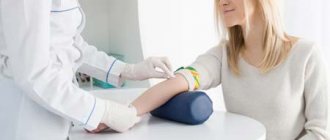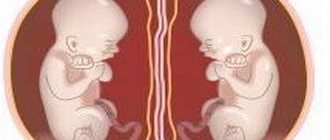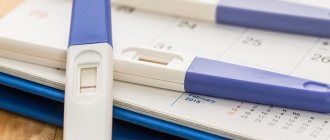At the beginning of a medical examination, the doctor sends the patient for tests, and urine must be examined. The presence or absence of the disease is determined by the results obtained. The processes occurring in the body do not pass without leaving a trace and are manifested in the results of bioassays. Women additionally try to understand whether it is possible to determine pregnancy using a urine test. To obtain a reliable and informative diagnosis, you can adhere to the following rules.
How to take a urine test
To collect a general analysis, sterile or at least clean glassware is required. Modern pharmacy kiosks offer special plastic containers for collecting biological material. They are easy to use, the main thing is not to press the walls of the vessel against the skin. Collect an average portion of morning urine, having previously carried out hygienic procedures for the external genitalia. The morning portion is used for the study, since the substances are contained in higher concentrations than in the daytime.
It is recommended that women cover the vaginal opening with a cotton swab to prevent the possible entry of microflora, the presence of which can affect the reliability of the study. It is necessary to collect in sufficient quantities - approximately 20 ml strictly on an empty stomach.
To get the correct analysis result you must:
- 24 hours before collection, stop taking medications, including herbal infusions and vitamins;
- 12 hours in advance, exclude alcohol-containing products, as well as citrus fruits, beets and carrots;
- Avoid hypothermia or overheating, as well as increased physical activity.
The collected material for analysis must be delivered to the laboratory within 1.5 hours only at a positive temperature. Otherwise, the analysis will be unsatisfactory. Precipitated salts due to low temperatures can lead to incorrect identification and diagnosis, the result will be interpreted as the presence of kidney diseases. There is a high probability of being referred for a repeat test.
Does a urine test indicate pregnancy?
The first week of delay is exciting for every woman. During this period, it is important to determine whether conception occurred or not. A general urine test submitted to the laboratory does not determine pregnancy. Modern diagnostic methods provide an answer to this question in the early stages at home, using a routine urine test. In this case, rapid tests are used, widely available in pharmacies. The test determines the level of the hCG hormone, which begins to be produced from the moment of conception. Its levels both in the blood and in the urine gradually increase. The sensitivity of the tests produced by manufacturers allows you to find out whether conception occurred from the first day of a missed period.
In order to get the most accurate result, you need to collect the material in the morning, in a clean container, after cleansing the external genitalia. Then lower the test to the level indicated by the arrows for about 30 seconds. At the end of this time, you can find out whether the woman is pregnant or not.
Recommended topic:
Protein in urine
It is important to remember that the reliability of the rapid test is 98%, and can be either false positive or false negative, so if there is no menstruation, the test should be repeated. The most accurate way to show the woman’s condition, namely whether she managed to get pregnant, is blood donated to the laboratory for hCG.
Which test to buy
Nowadays, most pharmacies are replete with tests to determine pregnancy. Their action is based on determining sensitivity to the presence of diuretic gonadotropic hormone. The choice of test depends on your financial capabilities. However, there are tests that doctors use at consultations for emergency analysis to determine this condition.
A variety of tests helps you quickly determine pregnancy without leaving home
The following types of tests exist:
- test strips;
- test tablets;
- tablet tests;
- inkjet tests;
- electronic tests.
Any of the tests can show directly, without leaving home, whether there is a pregnancy. The most inexpensive and easiest to use are regular paper test strips. Their disadvantage is considered to be paper media, which, if the test is stored incorrectly, can show an incorrect result. The urine is collected in a container and a test strip is dipped into it. The result is seen in 2-5 minutes.
Test tablets are dropped one at a time into a portion of urine. If the pregnancy hormone is present, the pill changes color from pink to blue. The disadvantage of this method is that the tablets disintegrate very quickly in liquid. If stored for a long time and improperly, they can absorb moisture, which will affect the result.
Second generation tests are tablet tests; sensitive strips are placed in a special plastic tablet. During the test, the color of the window changes. Its disadvantage is the necessary presence of a pipette designed to apply a drop of urine. However, this test is the most reliable and is used for diagnosis in a clinic.
Third generation inkjet and electronic tests. They are convenient to use because there is no need to collect urine in a special container. You can test at any convenient time of the day by simply urinating on the test.
If you suspect you are pregnant and the test shows a negative result, repeat the test after some time. Your body may not yet produce enough pregnancy hormone for the test to detect it.
Features of a general urine test
Urine is a liquid secreted by the kidneys during human life. General analysis is one of the oldest diagnostic methods in medical examination. It is known that the first studies were carried out in the Middle Ages. Modern laboratories consider certain indicators.
Compound
Using urine analysis, early detection of serious diseases is possible:
- diseases of the kidneys and urinary tract (kidney stones, tumors, inflammation);
- carbohydrate metabolism disorders (diabetes mellitus);
- liver diseases and hemolytic diseases.
A qualitative test describes which substance is present in the urine and which is not, while a quantitative test indicates the exact content of the substance.
A healthy person's urine is 97% water and should not contain protein, acetone, ketone bodies, elevated glucose levels, or blood components such as hemoglobin and white blood cells. The presence of the listed substances that are not normally found in urine, or changes in concentration indicate metabolic pathologies.
Color
A healthy person's urine is 97% water
The color is also analyzed - light yellow, almost transparent, any fluctuation indicates the presence of purulent discharge or blood impurities. However, other factors may influence the color, so the following recommendations should be followed when collecting.
Foaminess
Normally, when shaken, the foam is transparent and not abundant, and quickly falls off.
Density
In a healthy person, values vary from 1005-1030 g/l, pH (acidity) - from 4.8 to 7.5. The pH indicator has limited information content, since the pH value is subject to daily sharp fluctuations. The more protein foods there are in the diet, the more the pH level shifts towards the minimum parameter. A vegetable diet causes a shift in the alkaline environment to the maximum level.
Recommended topic:
Acetone in the urine of a child
The density also changes under extreme conditions (such as extremely high fluid consumption or, conversely, dehydration) and ranges from 1015 and 1025 g/l to 1001 and 1040 g/l, respectively. In case of deviations from the indicators, additional studies are carried out.
Reasons for the lack of positive indicators
Is it possible to determine pregnancy using a urine test? Definitely yes, but only a specialist can give a final conclusion. An important topic for women is the opposite situation when the analysis does not indicate pregnancy.
There may be various reasons for this fact:
- too early;
- a diluted urine concentration will not show a reliable result;
- fetal pathologies.
A woman should remember that if her menstrual cycle is delayed, she should immediately consult a specialist, because inaccurate results may indicate pathologies and diseases. In order to confirm or refute the result of the analysis, you should undergo an additional diagnostic examination and take a blood test.
Don’t be afraid to ask all the questions that concern you; this can help clarify the situation. With various diseases of the genitourinary system, false indicators are also possible, so only a complete diagnostic examination can indicate the correct conclusion.
When a woman becomes pregnant, the entire normal functioning of vital systems changes; situations and manifestations are possible that are of a purely individual nature.
Only a consultation with a specialist will be able to correctly assess all the features and diagnostic results.
Pregnancy causes significant changes in a woman’s body, since from the moment a new life is born, all the organs and systems of the expectant mother begin to rebuild and prepare for the next 9 months of bearing a child.
These changes certainly affect the composition of urine and blood. Therefore, many women wonder whether a urine test shows pregnancy and what exactly changes occur in a urine test during pregnancy?
The urine test must be interpreted by the child’s attending physician. Indeed, in order to draw up the correct treatment plan for a child’s disease, it is important for the doctor not only to decipher the indicators of a urine test, but also to correlate complaints, examination data and the results of an additional examination with the results of a urine test.
You can make an appointment with a doctor at the Center through:
online appointment form
or by calling the Center in Moscow:
7 or 7 (495) 954-00-46
during the working hours of the Center (daily, seven days a week and holidays, from 9.00 to 21.00)
24-hour urine test
According to existing rules, biomaterial collection occurs within 24 hours. The daily volume depends on the liquid received and is about 80%, i.e. from 1.5 to 2 liters. Fluctuations in values up or down indicate deviations in physiological and pathological conditions.
Urine is a highly informative liquid. Modern pharmacology, using special certified tests, detects the presence of drugs, poisons, drugs or doping substances in the urine.
Urine therapy has been practiced in alternative medicine for a long time. Followers of the method proposed to heal or reduce the symptoms of diseases such as asthma, eczema and cellulite through injections, external use or ingestion. There is no evidence to support the beneficial effects of treatment with your own urine.
It must be remembered: only a doctor can give a correct assessment of the results obtained. Self-diagnosis and self-medication are ineffective and can lead to serious consequences.
Gender of the child
Some people practice determining the sex of a child by urine and baking soda. To do this, you need to add soda to the urine and see what happens next. If the soda does not hiss in the urine, then the woman is expecting a girl. There is no foam - you will have a boy. True, this test contradicts the previous one. It said that if there is an active reaction between soda and urine, there is no pregnancy.
There are rumors among people that the color of urine during pregnancy with a boy is usually light. Yet this assertion has no basis. Since the shades of urine depend on how much fluid a woman drinks. The less, the darker her urine.
We have brought to your attention the most famous methods that have been “living” for many years among women.
Of course, there is nothing more reliable than ultrasound, test strips or hCG analysis. If you want to have fun and conduct experiments, then why not. If there is a match, you can tell everyone that your experiments turned out to be true. This is how myths are born! Share:










